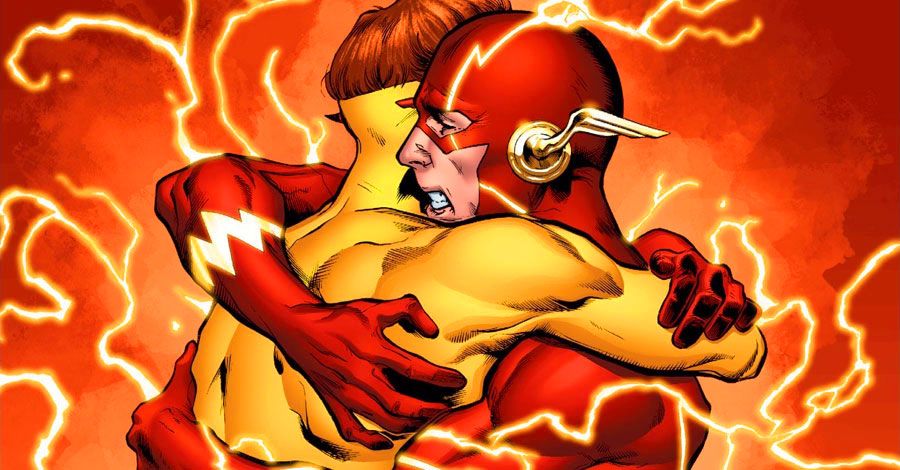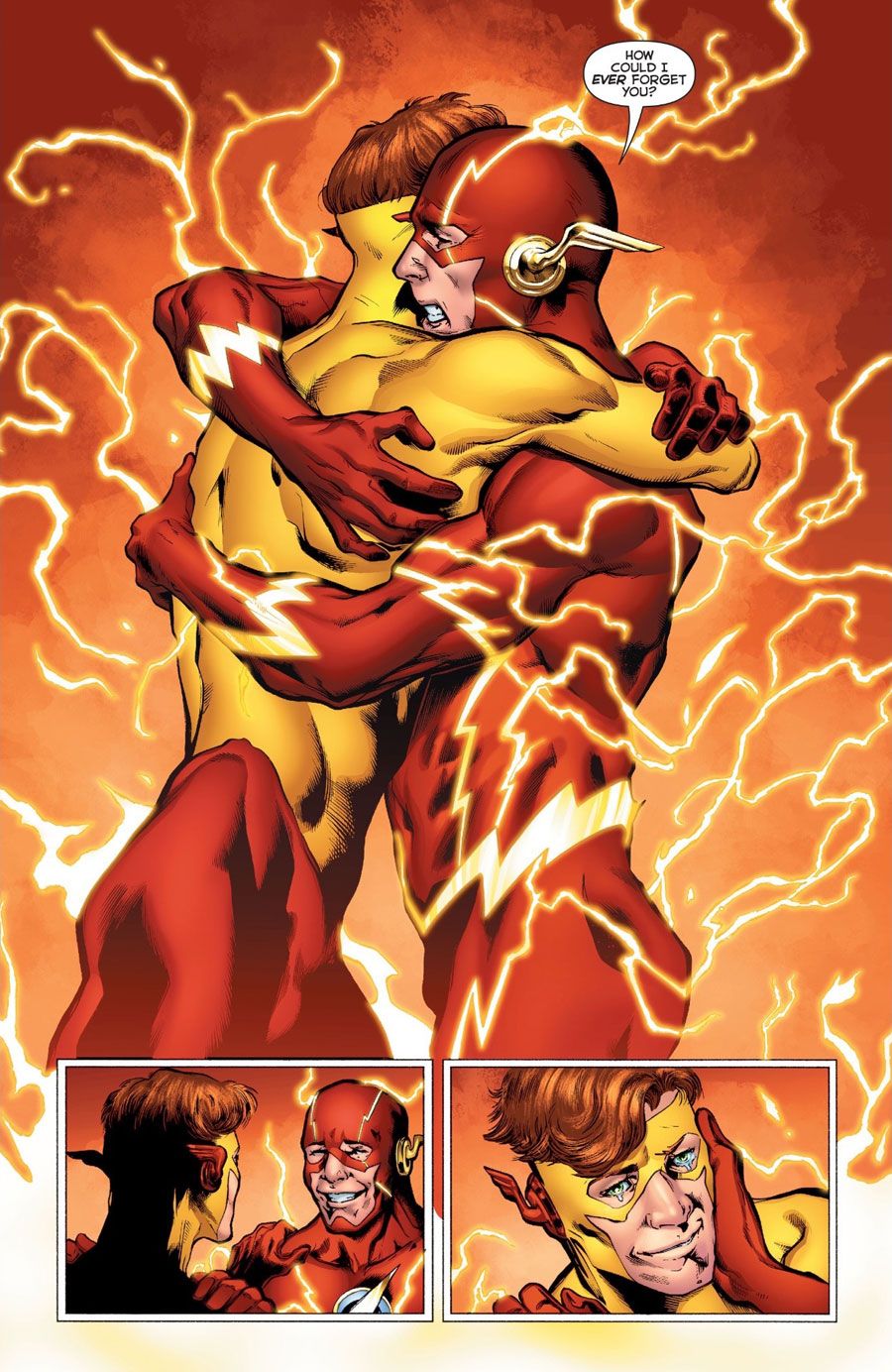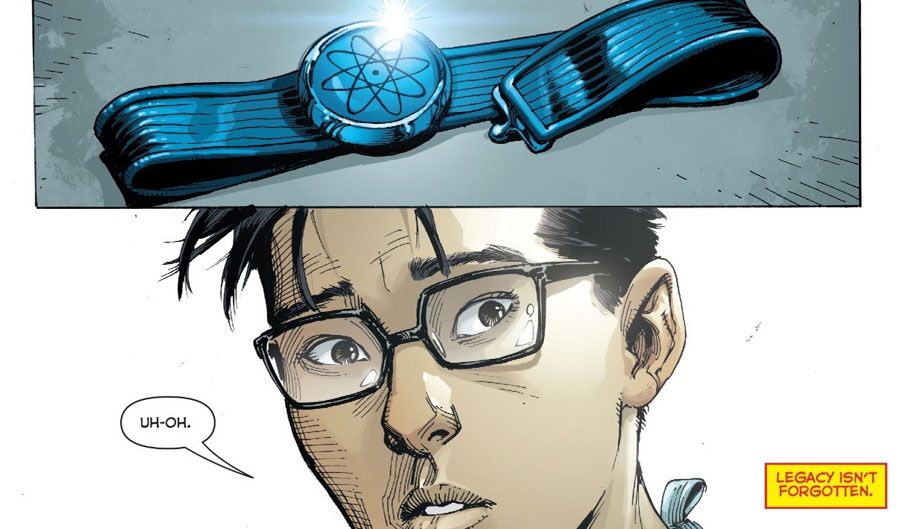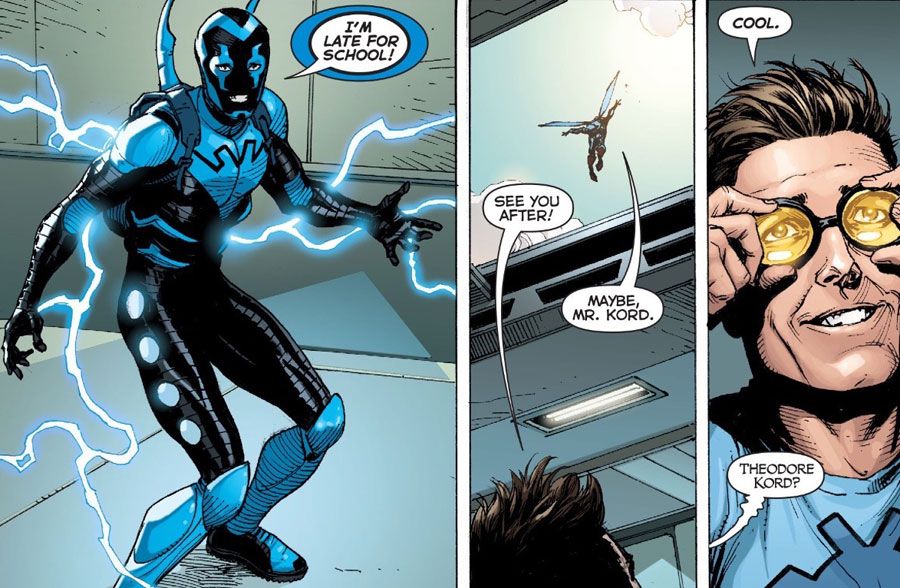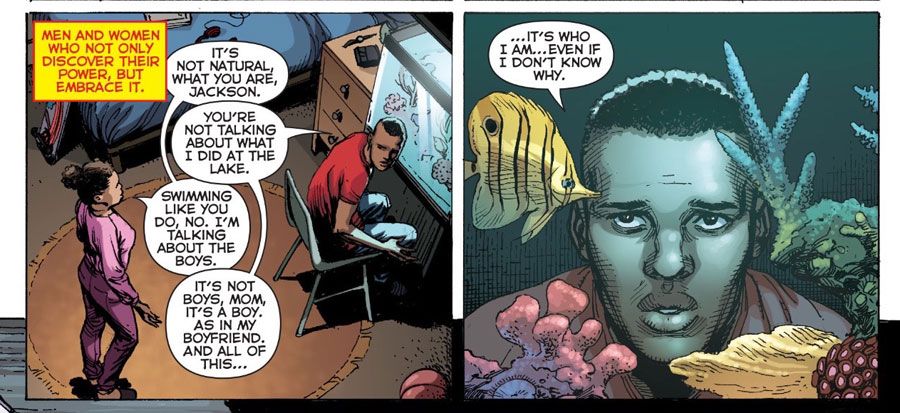SPOILER WARNING: This article contains major spoilers for "DC Universe: Rebirth" #1, on sale now.
Geoff Johns made something very clear from the start of DC Comics' "Rebirth" initiative: It's about restoring elements lost to the DC Universe in recent years, with "legacy" at the top of that list.
"It's a mystery that explores what I think is perhaps the central element that's gotten lost: legacy," the writer and DC Entertainment Chief Creative Officer told CBR News back in February.
For years, DC Comics distinguished itself with a sense of history and succession in its characters -- Jay Garrick was The Flash in the Golden Age, Barry Allen in the Silver and Bronze Age, and Wally West after 1986's "Crisis on Infinite Earths." The Green Lanterns has a similar pattern, with Alan Scott followed by Hal Jordan, who was followed by John Stewart, Guy Gardner and Kyle Rayner. Connor Hawke took over as Green Arrow from Oliver Queen, and, of course, multiple characters took over as Robin after Dick Grayson started calling himself Nightwing.
Much of that started to gradually shift in DC Comics, as Hal Jordan, Barry Allen and Oliver Queen each returned -- and just about all of it was lost in 2011 with the advent of the New 52, which rewrote DC's fictional history and established that superheroes only existed in the New 52 for about five years.
That all changed with this week's "DC Universe: Rebirth" #1 one-shot, written by Johns and illustrated by Gary Frank, Phil Jimenez, Ethan Van Sciver and Ivan Reis. Through a series of four major character returns, the issue boldly stated that legacy is back in the DC Universe -- here's how Johns and DC Comics fulfilled that promise.
WALLY WEST
For a generation of comic book fans, Wally West is their Flash. The former Kid Flash took over in the mid-'80s after the death of Barry Allen in "Crisis on Infinite Earths," and starred in some of the most critically acclaimed DC Comics releases of the '90s and early 2000s -- which helped cement the reputations of superstar writers Mark Waid and later, Geoff Johns. He also was The Flash of the "Justice League" cartoon, winning over another group of fans.
Yet even before the New 52, Wally encountered some tough times. After having superpowered twins with Linda Park, he left for an alternate reality, leaving the former Impulse, Bart Allen, to take over as Flash -- Wally later returned, though Barry Allen was brought back to life shortly thereafter, leaving Wally without much of a defined role in the DCU.
Wally West wasn't a part of the New 52 at all until 2014's "The Flash Annual" #3, the debut of an African-American version of the character -- one reflected on The CW's "The Flash" TV show, as played by actor Keiynan Lonsdale.
"DC Universe: Rebirth" is told entirely from the original Wally West's point of view, revealing he's been trapped in the Speed Force and facing death if he isn't able to make contact with the "real world" -- which is tough, since no one seems to remember him. Barry Allen eventually does, bringing Wally back to life, and thus restoring a huge chunk of DC history missed by a lot of longtime fans -- with the character now appearing in the upcoming "Titans" series. The new Wally West hasn't been forgotten, either, as the issue establishes that he's a different person (a cousin who happens to have the same name) rather than an alternate universe doppelganger; with that character co-starring in the new "Teen Titans" book as Kid Flash (though how long DC intends to have two Wally Wests running around remains to be seen).
RYAN CHOI
Ryan Choi disappeared almost as quickly as he was introduced, with the Asian-American Atom first seen in 2006's "DCU: Brave New World," and then killed off in 2010's ""Titans: Villains for Hire" #1. It was a controversial move at the time, since DC -- and North American superhero comics in general -- had a distinct lack of Asian lead characters, and was now faced with one fewer.
Still, DC appeared quick to reverse the decision. DC Co-Publisher and former "Justice League" artist Jim Lee stated that Ryan Choi would appear in that series as the Atom, but that didn't end up happening. Other than appearances in last year's "Convergence" series, Ryan Choi has been absent in the New 52 era -- until "DC Universe: Rebirth."
Choi is seen in the book as a protege of Ray Palmer, the original Atom, who knows his technology but has no superheroing experience. Palmer is lost in the "microverse" (a term usually associated in comics with Marvel's fictional universe), and enlists Ryan's help to retrieve him. It's not yet known where this storyline will be followed up, but Ryan Choi is back, and has a clear path towards becoming the Atom again for the first time.
TED KORD
The death of Ted Kord was a major turning point in the DC Universe as a whole becoming a darker place. As the Blue Beetle, the character was a major part of some of the most beloved DC Comics of the '80s and '90s, specifically the "Justice League International" era helmed by Keith Giffen, J.M. DeMatteis and Kevin Maguire. Along with his best friend and fellow superhero Booster Gold, Ted Kord symbolized a lighter side of the DC Universe.
Then DC Comics put a bullet in his head -- courtesy of Maxwell Lord, who was also a big part of those "Justice League International" comics.
The death, in 2005's "Countdown to Infinite Crisis," managed to stick for about a decade, even after the resurrection of multiple DC characters (including Maxwell Lord) at the end of "Blackest Night." In the New 52, Ted Kord was eventually reintroduced, but as a genius inventor, not a superhero.
In "DC Universe: Rebirth," current Blue Beetle, Jaime Reyes, is seen working with Ted Kord, who's gleeful at the prospect of joining Jaime on superhero adventures and has constructed a new version of his flying headquarters, the Bug. (He's even more gleeful when Doctor Fate shows up and starts talking about magic, resembling his old self.) Though Jaime is depicted as reluctant, it's already been established that Ted Kord will play a role alongside Jaime Reyes in the "Rebirth" era "Blue Beetle" series, set to debut in August and written by Keith Giffen.
JACKSON HYDE
Jackson Hyde was one of the most inexplicable exclusions of the New 52 era. The second Aqualad (and the first Black character in that role), he was introduced in 2010's "Brightest Day" #4 by Geoff Johns and Ivan Reis -- and then pretty much vanished after "Brightest Day" wrapped, never appearing during the New 52 era despite a version of the character co-starring in the cult favorite animated series "Young Justice."
Jackson Hyde appears for only two panels in "DC Universe: Rebirth," but they're important ones. Not only is it established that he still as water-based powers, but also that he's gay -- further diversity in DC's superhero roster, which has few openly gay characters. Like Ryan Choi, it's not clear yet where the next chapter of Jackson Hyde's story will be told (though "Aquaman" seems like the natural choice), but he's resurfaced after five years of comic book limbo.
"DC Universe: Rebirth" #1 is on sale now.

